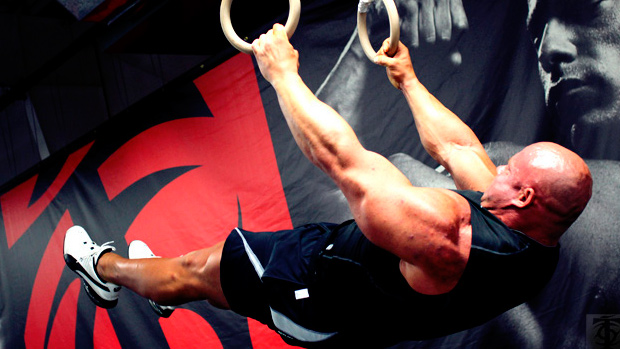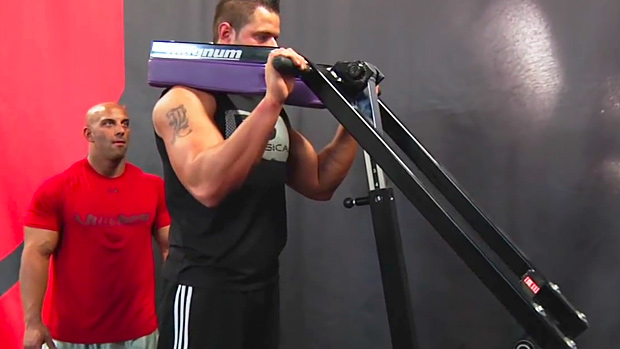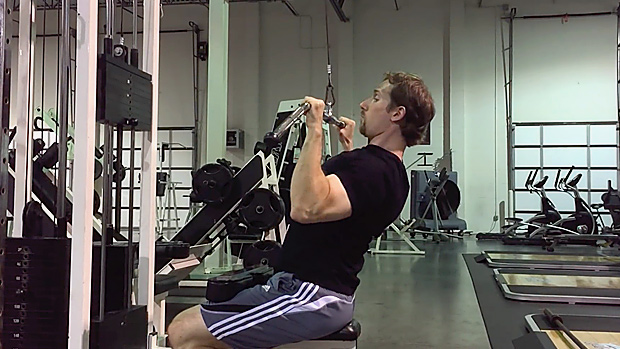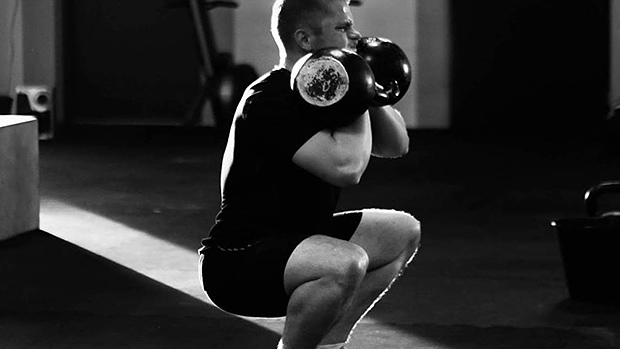Most of us recognize the importance of testing. After all, we need to make sure we're actually getting stronger and not just spinning our wheels. The most common test in the gym is the one-rep max, and it's certainly a useful metric.
But if we're interested in our overall health and durability in addition to putting up big weights, the 1RM isn't the only measure we need to consider. After all, what good is having a 600-pound deadlift if you're so fat you can barely hold onto a pull-up bar, let alone perform a single chin-up?
Absolute strength refers to the total amount of weight you can lift – your 1RM. Relative strength refers to your strength compared to your bodyweight.
Take two lifters. One weighs 300 pounds and deadlifts 600 (double-bodyweight). The other weighs 167 pounds and deadlifts 500 (triple-bodyweight). Which lifter is more impressive? You can easily make the case for either one, but there's very little question about which person is going to be more versatile, not only in the gym, but also in daily life.
For most people, both absolute and relative strength matter. So how do you test for relative strength? Divide all of your 1RM's by your bodyweight and compare it to your friends? Actually, there's a much easier way, one that doesn't require a calculator or even any external resistance. It's called an "iso hold."
Below are seven insanely challenging iso hold tests of bodyweight relative strength listed in order of increasing difficulty. Master these challenges, in addition to your big lifts, and your all-around strength will be unparalleled. Each challenge only takes 20 seconds.

- Metric: Grip strength
- Standard: Hang from a pull-up bar with your preferred grip and your hips slightly piked for 20 seconds.
- Advanced Version: Do it with only one arm at a time.
- In the case of failure: Spend several weeks training chin-up hang cluster-sets. Begin with sets of four 5-second holds and progress to longer holds.

- Metric: Lower-body pushing strength
- Standard: Begin with the feet hip-width apart and take a large step backwards with one leg. Drop straight down so your back knee is an inch off the floor, keeping your torso and the shin of your front leg nearly perpendicular to the floor. Hold this position for 20 seconds. Switch the front and back legs and repeat.
- Advanced Version: Perform the same test, only with the back foot off the ground (an airborne lunge).
- In the case of failure: Spend several weeks training pause split squats. Begin with 2-second pauses and work up to 5-10 seconds per rep.

- Metric: Posterior core strength
- Standard: Lock your lower legs into place on a back extension (or similar rig) and fold your arms across the chest. Push the hips into the pad to lift your torso so it's parallel to the floor. Your body should form a straight line from head to heel. Without overarching your back, hold this position for 20 seconds.
- Advanced Version: Extended arms overhead.
- In the case of failure: Spend several weeks training paused back extensions, regressing to 45 degree back extensions if necessary. Begin with 2-second pauses and work up to 5-10 seconds per rep.

- Metric: Anterior core strength
- Standard: Begin in a tall kneeling position, with the knees hip-width apart. Maintaining a flat back, roll the ab wheel all the way out so the body is parallel to the floor and hold it for 20 seconds.
- Advanced Version: Perform the same test from a deficit – knees elevated higher than hands.
- In the case of failure: Spend several weeks training anti-extension core exercises like dead bugs, planks, and paused ab wheel roll-outs. Begin with 2-second pauses and work up to 5-10 seconds per rep.

- Metric: Upper body pushing strength
- Standard: Begin by standing adjacent to a wall with the hands a little wider than shoulder-width apart on the floor. Kick the legs up overhead to rest them on the wall. Keeping the hips off the wall, hold this position for 20 seconds.
- Advanced Version: Use one arm at a time.
- In the case of failure: Spend several weeks training feel-elevated pike position push-up holds and work up to wall-supported handstand holds.

- Metric: Upper body pulling strength
- Standard: Begin in a dead hang from a pull-up bar with a neutral or pronated (overhand) grip. Bring your knees to your chest and, moving entirely from the shoulders, rock back so your torso is parallel to the floor. Hold for 20 seconds.
- Advanced Version: Perform the same test, only in a full front lever, with legs fully extended.
- In the case of failure: Spend several weeks training pull-overs and stiff-arm pull-downs, working up to paused tuck front levers.

- Metric: Lower-body pulling strength
- Standard: Begin in a tall kneeling position with the knees hip-width apart and the heels locked in place. (If you can't duplicate the setup, just have a partner hold you in the correct position.) Keeping your hips fully extended, slowly descend a few inches towards the floor and hold that position for 20 seconds.
- Advanced Version: Do it with arms overhead.
- In the case of failure: Spend several weeks training various hamstring curl variations, working up to eccentric Nordic hamstring curls with a pause. Begin with 2-second pauses and work up to 5-10 seconds per rep.





